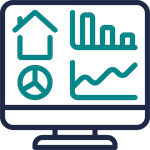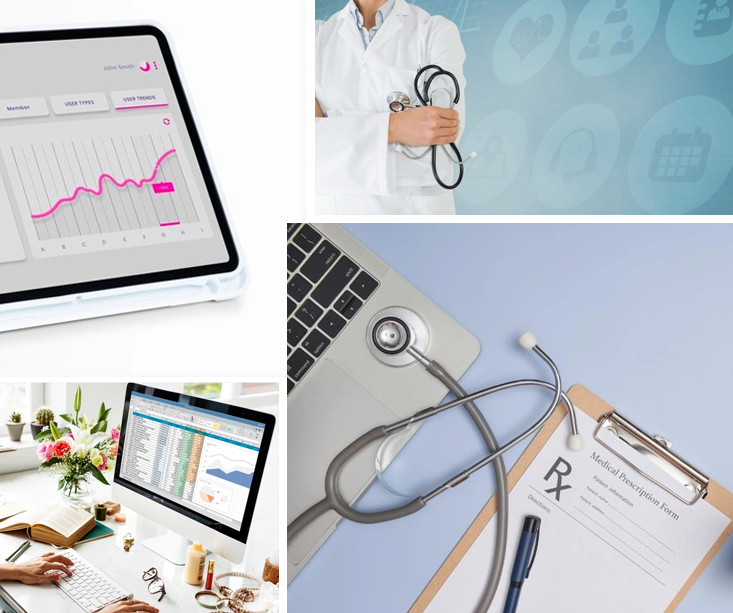The healthcare industry, always a beacon of innovation and change, is poised for yet another transformation. With a predicted market size of $16.9 billion by 2024, the medical billing sub-sector finds itself in the throes of technological evolution. As the dynamics of healthcare shift, and as patients become more central to their care process, the billing systems are evolving to keep pace. This article aims to shed light on the technologies and trends that will shape this transformation.
1. Artificial Intelligence (AI) and Machine Learning
Expected to command a market value of $36.1 billion by 2025, AI is the titan of technological change in healthcare. The implication of medical billing technology is profound. AI can streamline billing processes, preemptively identify billing errors, and even enhance the rate of claim approvals. Furthermore, Machine Learning, a subset of AI, can sift through massive datasets to discern patterns, offering insights that can minimize claim denials by up to half. The combination of AI and Machine Learning suggests not just a faster billing process, but a more accurate one.
2. Blockchain
Blockchain is more than just the technology behind cryptocurrencies. Its transparent, unchangeable records offer a promise of security and transparency hitherto unseen in the medical billing space. Implementing blockchain could potentially decrease billing fraud rates by over 55%. Additionally, the introduction of ‘smart contracts’ on blockchain platforms can further expedite and automate many of the billing processes.
3. Telehealth and Its Implications
With telehealth consultations witnessing a 50% surge in early 2020, the landscape of healthcare consultations is changing. This change has billing implications. The devices that facilitate remote patient monitoring, which sends real-time health data to medical professionals, also influence how billing systems are designed. The challenge lies in creating billing systems that accommodate these new modes of healthcare delivery.
4. Value-Based Billing
There’s a seismic shift happening in the billing world and the future of medical coding. The industry is gradually moving away from the traditional fee-for-service model. Instead, there’s a palpable move towards value-based billing, where reimbursements are linked more to the quality of care and health outcomes rather than sheer service volume. This not only promotes optimal patient care but also reduces unnecessary medical procedures.
5. EHR Integration
The merging of billing systems with Electronic Health Records (EHR) represents another facet of the digital transformation wave. A seamless integration promises fewer billing errors, ensuring that a patient’s billing details align perfectly with their medical records.
6. The Predictive Power of Analytics
Predictive analytics, with its power to forecast based on historical data, could be the tool that transforms medical billing. Analyzing past data can help healthcare providers make predictions about revenue streams, understand patient payment behaviors, and even foresee claim denials.
7. Cybersecurity
The more the industry leans towards digitization, the greater the threat from cyber breaches. Protecting sensitive patient data becomes paramount. With predictions suggesting a 15% increase in cybersecurity investments by healthcare establishments by 2023, it’s clear that the industry is taking these threats seriously.
8. Chatbots and Digital Assistants: The Frontline Helpers
Automated chatbots and digital assistants, anticipated to be integrated by 70% of healthcare institutions by 2024, can play a crucial role in addressing patient queries about their bills. This not only eases administrative burdens but also ensures patients have clarity regarding their bills.
9. Personalized Billing: A Tailored Approach
Recognizing and respecting individual financial situations will become key. Tailored billing solutions, be they customized payment plans or reminders, will enhance patient experience and ensure better compliance.
10. Regulatory Evolution
As the industry evolves, so will the regulations governing it. Stricter compliance norms and standardized billing procedures will ensure consistency, reduce errors, and build patient trust.
11. The Global Perspective: Outsourcing
Cost optimization and focus on core healthcare offerings might see providers outsourcing their billing operations. By 2025, we might see a 20% increase in such global outsourcing, emphasizing the importance of standardized practices across borders.
The Financially Empowered Patient
The rise in high deductible health plans means patients are now more financially involved in their care than before. With predictions suggesting that 65% of patients might opt for digital billing methods by 2025, it’s clear that the billing process needs to be both transparent and user-friendly.
Benefits and Drawbacks
As the healthcare industry gears up for substantial changes in the future of medical billing and coding, it’s essential to weigh the benefits against the challenges. Here’s an in-depth look at the pros and cons associated with these emerging trends.
1. Technological Integration: AI, Blockchain, and EHRs
Integrating cutting-edge technologies into the billing process promises enhanced efficiency and security. But, as with all tech, it requires careful handling and adaptation.
Pros:
Efficiency: AI and Machine Learning automate repetitive tasks, reducing manual errors and speeding up processes.
Security: Blockchain’s immutable nature ensures every billing transaction is secure and transparent.
Accuracy: EHR integration ensures billing details align with a patient’s medical records.
Cons:
Complexity: Implementing and managing these technologies requires specialized knowledge.
Initial Costs: Upfront costs of integration can be hefty, especially for smaller practices.
Dependence: Over-reliance on technology might pose challenges during downtimes or glitches.
2. Telehealth and Remote Monitoring
Telehealth bridges geographical divides, offering healthcare services over vast distances. However, this new mode of delivery isn’t without its challenges.
Pros:
Accessibility: Enables medical consultations for remote patients.
Real-time Data: Provides proactive care through continuous monitoring.
Cons:
Billing Ambiguities: Adapting to new service models might create billing complexities.
Data Overload: Continuous patient monitoring can lead to overwhelming data influxes.
3. Value-Based Billing
Transitioning from traditional billing models, value-based billing puts patient outcomes at the forefront. This shift, while promoting quality, brings its set of challenges.
Pros:
Quality Care: Promotes better healthcare services by focusing on outcomes.
Cost Efficiency: Emphasizes preventive care, reducing redundant medical interventions.
Cons:
Revenue Uncertainty: Initial transition might impact provider revenue streams.
Complex Metrics: Determining “value” or “quality” requires intricate evaluations.
4. Personalized Patient Billing and Digital Interfaces
The digital era ushers in tailored billing solutions, medical billing technologies and user-friendly interfaces, aiming to simplify the billing experience. However, digitization also raises certain concerns.
Pros:
Improved Experience: Enhances patient experience, leading to better compliance and trust.
Transparency: Provides clear bill breakdowns, ensuring charge understanding.
Cons:
Privacy Concerns: Digital platforms may pose data breach risks.
Learning Curve: Some patients, especially from older demographics, might find digital adaptation challenging.
Understanding the advantages and challenges of these emerging trends in medical billing ensures a balanced, informed approach. Stakeholders can thus navigate this evolving landscape with clarity and confidence.
Wrapping Up
The healthcare world is undergoing a major transformation, especially in medical billing, which is gearing up to be a $16.9 billion market by 2024. Thanks to technologies like AI and Machine Learning, billing is becoming both faster and more accurate. Blockchain is stepping in to offer unparalleled security. Telehealth is reshaping consultations and their billing methods. Plus, there’s a significant move towards value-based billing, which centers on quality care.
As more people opt for high-deductible plans, the demand for transparent and user-friendly billing is rising. However, this progress comes with its set of challenges, from tech complexities to initial setup costs. It’s an exciting evolution for everyone in the industry.



















